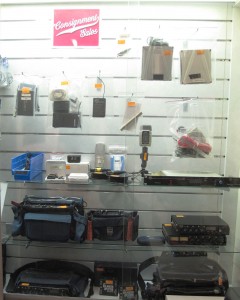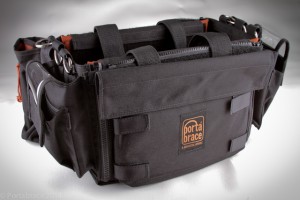It’s just a reality that mixers who own their gear are one step ahead of the game. But the mixer who owns quality gear is two steps ahead. Having brand name equipment says a lot to production companies as they are more apt to hire someone who can provide production standard equipment.
Another three reasons to own gear? Back up, back up, and back up! Repeat it three times. With productions filming in increasingly remote locations, often days away from sound stores that can fix or replace broken gear, having back up equipment is vital for survival.
So how does one build up their personal sound package without breaking the bank? It’s not always easy. One can apply for a loan from a finance company, or should they be so lucky, from the bank of Mom and Pop. Next is to play the game of paying off the loan by renting the newly purchased gear. This is a perfectly valid method, but perhaps not the most preferred. Fortunately, there is a way to get top quality equipment without calling up “The ‘Rents” or having to finance a loan.
You may want to see what you can find used.
Lucky you! It just so happens that Location Sound Corporation is a great place to shop for used audio equipment without the fear of getting burned. Here’s why:
90-Day Warranty: Whether you purchase used audio equipment from our rental department or consigned pieces through our sales department, we back the equipment with a 90-day warranty.
30-Day Return Policy: If a week into your purchase, the job you bought it for falls through, or for whatever reason, you have 30 days to return it, no questions asked, no buyer’s remorse! Your purchase should be in same shape it was the day you bought it, of course.
Reliability: All used audio rental or consigned equipment are thoroughly tested by our Service Department for operational integrity and must meet the manufacturer’s specifications before it goes on sale. If, after purchase and within the 90-days, you find an issue that we didn’t, we will make it right. Our Rental Department will even loan you the same piece of gear or equivalent to what you purchased while our Service Department takes a look at it.
Haggle Room: If a consignment mixer, wireless system, or microphone has been sitting on display for months without a bite, the seller may even let it go for less than the asking price. If you think it’s priced a little high, let any of the Location Sound sales reps know. They can offer a counter to the seller on your behalf.
Now that we’ve taken the worry out of buying used audio gear, give our site’s Used Gear section a perusing. And here’s a tip: cruise by our store once or twice a week if you’re in the area. You’ll substantially increase your chances of getting the very best selection because the best used audio equipment doesn’t sit around for very long.
Submitted by Dave Auslender, LSC Sales Representative


